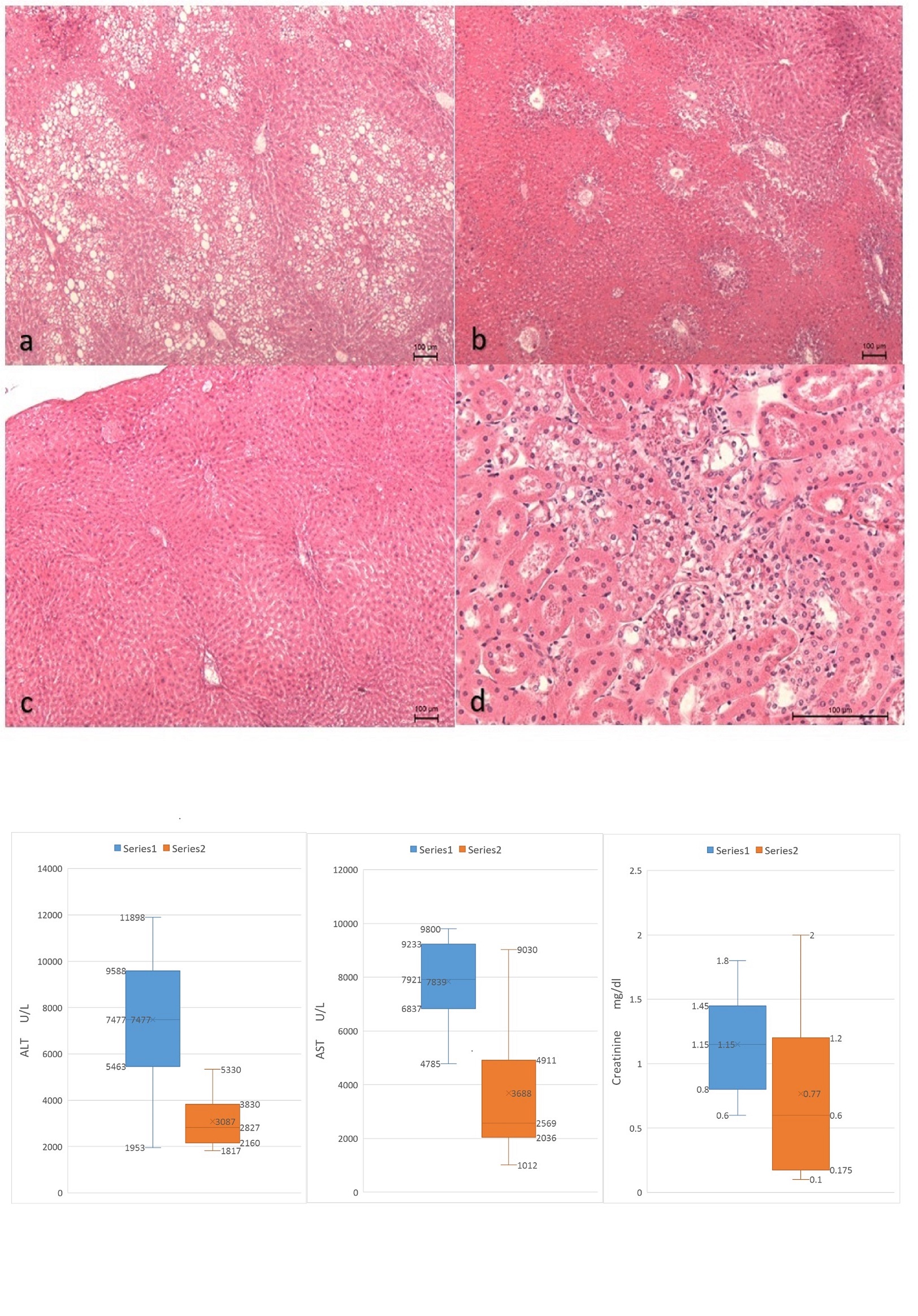Effect of Hepatic Steatosis on Hepatic Ischemia-Reperfusion Induced Acute Kidney Injury in Mice
1Transplant Surgery, Indiana University School of Medicine, Indianapolis, IN, 2ICRME, Indiana University School of Medicine, Indianapolis, IN
Meeting: 2020 American Transplant Congress
Abstract number: C-362
Keywords: Donors, marginal, Ischemia, Mice, Renal injury
Session Information
Session Name: Poster Session C: Ischemia Reperfusion & Organ Rehabilitation
Session Type: Poster Session
Date: Saturday, May 30, 2020
Session Time: 3:15pm-4:00pm
 Presentation Time: 3:30pm-4:00pm
Presentation Time: 3:30pm-4:00pm
Location: Virtual
*Purpose: Livers with mild to moderate steatosis have been used to expand the donor pool for transplantation. However, livers with steatosis have a propensity for exaggerated reperfusion injury that can lead to an inflammatory response. This in turn can cause poorer graft function, as well as remote organ injury such as hemodynamic compromise, cardiac dysfunction and acute kidney injury after liver transplant. Currently the pathobiology linking liver steatosis and remote organ damage such as acute kidney injury (AKI) is not fully known. The aim of this study was to evaluate the murine 70% hepatic ischemia model in conjunction with diet induced steatosis as a suitable model to study AKI.
*Methods: Hepatic steatosis was induced in mice by feeding a high fat diet (HFD) with 45% calories through fat, for 12 weeks. Mice were subjected to partial (70%) hepatic ischemia reperfusion injury (IRI) by direct occlusion of the left portal vein and left hepatic artery for 60min followed by reperfusion for 24hr. Changes in liver and kidney perfusion were monitored using doppler flow probe placed on the tissue surface of the left lateral lobe (ischemic), right lateral lobe (non-ischemic) and both kidneys before and after occlusion and reperfusion. Liver and kidney injury were quantified by measuring serum aspartate-aminotransferase (AST), and creatinine respectively. Controls consisted of mice fed normal diet.
*Results: In this model of hepatic IRI, progressive liver injury was observed following hepatic ischemia and reperfusion. In mice fed with a HFD diet (n=9), 1 mouse died at 12 hours after surgery, there were no deaths in the normal diet mice (n=9). Following the occlusion of blood flow at the hilum, the drop in blood flow of the steatotic liver was more pronounced as compared to the normal liver. The average ALT and AST was 7477 ± 2062 U/L and 7921 ± 1198 U/L in HFD mice as compared to 3087 ± 835 U/L and 3688 ± 1437 U/L in normal diet mice respectively. The acute kidney injury was more severe in HFD group with average creatinine of 1.15 mg/dl against 0.77 mg/dl in normal diet mice. (Table 1)
*Conclusions: Hepatic ischemia reperfusion injury causes acute kidney injury. These changes are pronounced in steatotic livers. Liver steatosis also worsens hepatic IRI as compared to normal livers.
Fig1.a.Steatotic liver showing macrosteatosis. b.Ischemic liver with patchy ischemic necrosis, loss of nuclei in hepatocytes. c.Non ischemic liver with preserved architecture. d.Kidney showing tubular necrosis and neutrophilic infiltration.
To cite this abstract in AMA style:
Nikumbh T, Biswas N, Das A, Sen CK, Kubal S. Effect of Hepatic Steatosis on Hepatic Ischemia-Reperfusion Induced Acute Kidney Injury in Mice [abstract]. Am J Transplant. 2020; 20 (suppl 3). https://atcmeetingabstracts.com/abstract/effect-of-hepatic-steatosis-on-hepatic-ischemia-reperfusion-induced-acute-kidney-injury-in-mice/. Accessed December 27, 2025.« Back to 2020 American Transplant Congress

